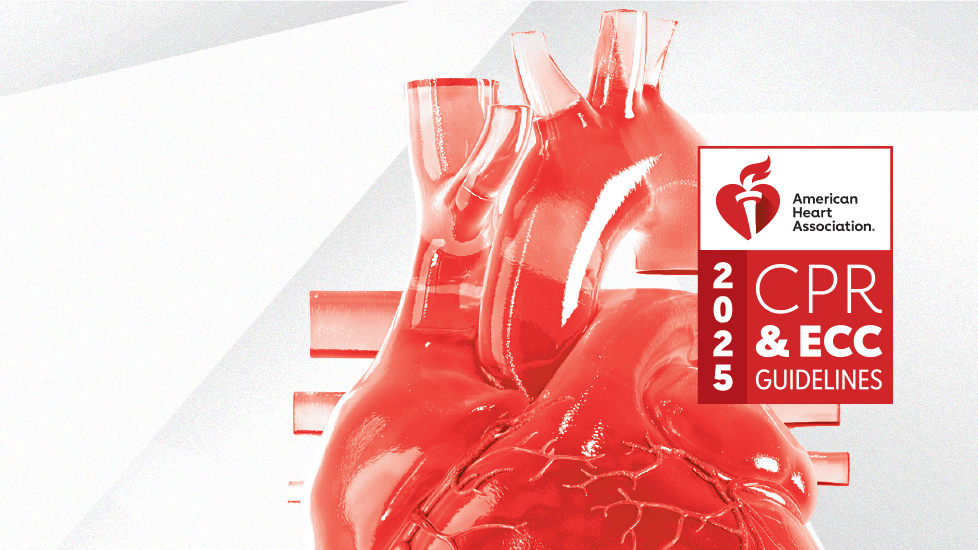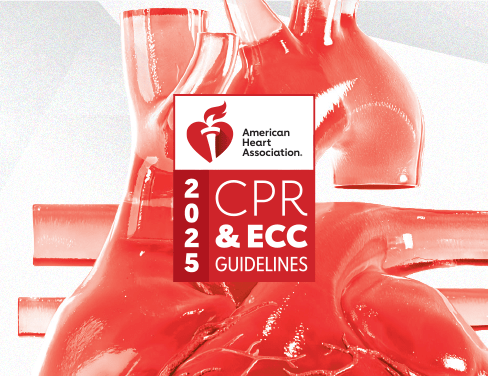 American Heart Association
American Heart Association 2025 American Heart Association Guidelines for CPR and ECC
These guidelines are based on the most current and comprehensive review of resuscitation science, systems, protocols, and education.

2025 American Heart Association Guidelines for CPR and ECC
Please select this link, Statements and Policies, to learn more about copyright permission guidelines and requests.
2025 AHA Guidelines for CPR and ECC: The Virtual Experience
The American Heart Association is pleased to announce that the official 2025 American Heart Association Guidelines for CPR & Emergency Cardiovascular Care (2025 AHA Guidelines for CPR & ECC) will be published online in the AHA’s flagship journal, Circulation, on Wednesday, October 22, 2025.

AHA CPR & ECC Guideline Focused Updates
A guideline focused update is a revision of existing clinical recommendations, issued in response to new scientific evidence or when a guideline has not been reviewed for a significant period. These updates ensure that practices remain aligned with the latest research, improving patient outcomes and care quality.
AHA Guideline and Focused Update Highlights
Guidelines Highlights provides a summary of resuscitation guidelines and focused updates.
2024 American Heart Association and American Red Cross Guidelines for First Aid
2025 Guidelines in Circulation
View the 2025 Guidelines for CPR and ECC published in the American Heart Association’s flagship journal, Circulation.
Guidelines Instructor Updates
The 2025 AHA Guidelines Instructor Update Courses, exclusively for our AHA Instructors, are now available! These courses satisfy Instructors’ required, official 2025 AHA Guidelines Instructor Update.
All AHA Instructors must complete their required science update by February 28, 2026.
All AHA Instructors must complete their required science update by February 28, 2026.
ECC Digital Digest Podcasts
American Heart Association's Emergency Cardiovascular Care Digital Digest - your resource for leading scientific content focused on hot topics in resuscitation and emergency cardiovascular care featuring industry experts.
.jfif?h=390&iar=0&mw=390&w=390&sc_lang=en)
2025 AHA Guidelines In-Service
The 2025 AHA Guidelines Science In-Service is an online course designed to provide healthcare providers information on new science and key changes published in the 2025 AHA Guidelines for CPR and ECC.
2025 AHA Guidelines for CPR and ECC Media Kit
Access the electronic press kit for 2025 Guidelines here.
 Login
Login


